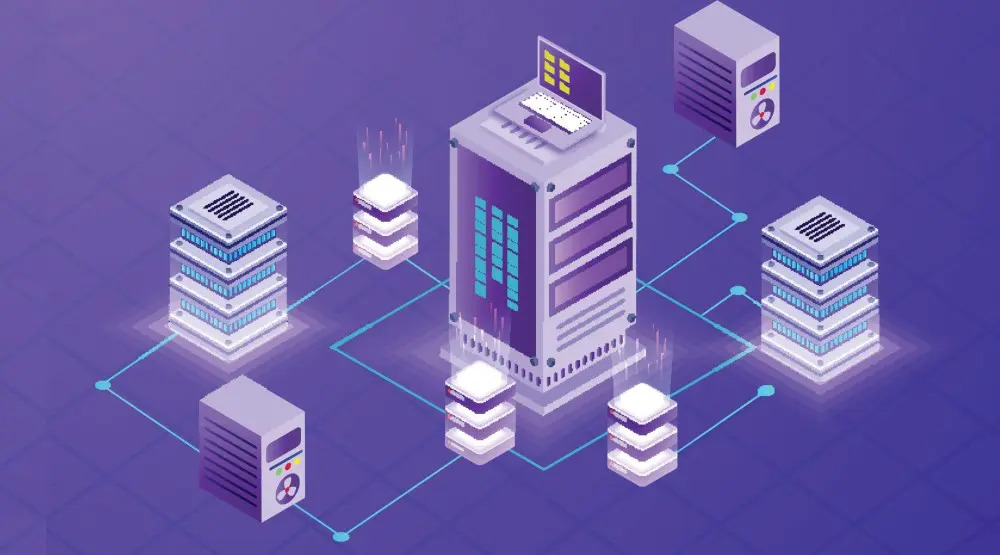Types of Proxy: Everything You Need To Know
When it comes to types of proxies, there is no one-size-fits-all. The types of proxy servers can be classified based on location, traffic flow, anonymity level, application, service, and type of IP. It all depends on your custom and dedicated demands.
A proxy can be anything from a piece of software that runs on a desktop to an appliance protecting traffic on a data center. Today, there are many types of proxy servers out there, but the most popular is the Web Proxy, which facilitates access to the WWW, and provides IP anonymity, flow control, and reliability.
This is a guide to proxy types. Here you’ll learn everything you need to know about the types of proxies, what they are, and what they can be used for.
1. Types of Proxy Based on Location
The initial idea of a proxy server was to centralize requests and responses to simplify complex distributed networks. In a distributed network all the nodes can impact the overall performance of the network (look at the diagram below). But in a hub-and-spoke or centralized network, the core node influences other nodes.
So regardless, if you place a proxy in an internal network separating two subnetworks, or if you place it between a private and public network, aka, (the Internet), the idea of the proxy is still to centralize requests and responses. This idea leads us to two types of proxies.
Types of Proxy: Public Proxy
Public proxies are readily available in online proxy lists. Public proxies are the unsafest and the most unreliable proxies. Most of them are set up by hackers or government agencies to steal data. Still, many people use public proxies because they are free. This is an unscalable approach because you cannot expect to gather millions of public proxies every day. It also doesn’t help that public proxies ‘die’ (go offline) within minutes. As thousands of people scour the internet in search of public proxies, finding a good, secure, and uncompromised public proxy is a quest in itself.
Types of Proxy: Private Proxy
This proxy separates an already complex private distributed network, usually a WAN or campus network. This type of proxy adds structure and improves security in an internal network.

2. Types of Proxy Based on Traffic Flow
Another classification regarding location can be made based on the direction of traffic. Just like a firewall filters inbound and outbound traffic, a proxy can also be treated differently when sending or receiving traffic from the Internet. Two popular types of proxies face the Internet and get different names because of their traffic flow. Although they could also be implemented internally (without Internet), the forwarding proxy and the reverse proxy are used to add protection from the Internet.
Forward Proxy
Forward proxies are used to transmit data to groups of users within an internal network. When the request is sent by the sender, the proxy server assesses the data to decide whether it should go ahead and form a connection.
Reverse Proxy
In terms of traffic direction, a reverse proxy is the opposite of a forwarding proxy. When facing the Internet, a reverse proxy takes the outbound traffic from the Internet, processes it, and forwards it to an internal network (usually a web server or service). The reverse proxy is used to protect internal resources by controlling traffic coming from the risky Internet. Reverse proxies are used to hide the identity of servers, authentication, decryption, load-balancing, caching, and compression.
3. Types of Proxy Based on Service
There are providers out there (free or paid) that provide a different degree of service. The proxy types based on a service provider may be public or private. Public proxies are risky and slow servers, but they are free. While private proxy providers guarantee privacy, speed, and reliability. A private proxy can be dedicated or shared.
Public Proxy
These types of proxies are also known as open proxies. They are free proxies shared by many users at the same time. They are commonly found via websites publishing updated proxy server lists. The obvious advantage of public proxies is that they are free. But the disadvantages outweigh their advantages, these proxy servers are slow, insecure, and unreliable.
Private Proxy
These types of proxies are far more reliable, fast, and secure than free public proxies. Companies providing private proxies offer other features, services, and customer support. A private proxy can be dedicated and shared.
Dedicated Proxy
Dedicated proxies are the standard name for proxies that are not shared. This means that only a single user can use a dedicated proxy at any time. Proxy servers provide dedicated proxies to protect the IP address from burning out or being blocked due to overuse.
Shared Proxy
Shared proxies are the types of proxies that several clients can use at any time. Shared proxies are usually the cheapest proxies because many clients split the cost and get to use more proxies for the same price. Shared proxies need an extremely powerful network architecture because they have to mediate many connection requests at the same time.

4. Types of Proxy Based on IP
The types of proxy servers may also vary according to how they obtain their IP address. The most popular and traditional way to obtain IPs to mask the source IP is with data-center IPs. But as proxies evolved, service providers started to get IPs from ISPs and mobile operators, then came the residential and mobile proxies. One of today’s best proxy technologies is the rotating IPv6 proxy, as shown above. This type of proxy takes a new IP from an IP pool for every new session.
Data Center Proxy
Data Center proxies are non-physical IP addresses that are artificially created at datacenters. A single server can host hundreds of data center proxies, but they will all share the server’s IP subnetwork. This means that any group of data center proxies will look very similar and will be prone to cloaking or a ban. The upside of data center proxies is their speed, as most data centers have an enviable internet connection.
Residential Proxy
What are residential proxies? Residential proxies are by far the best proxies for most uses because they are IP addresses of real, physical devices. They appear as average users to all servers and are almost impossible to detect (unless the proxy user abuses it). Using a residential proxy makes gaining access to data easy. It allows clients to avoid geographic restrictions or cloaking, the manipulative technique some sites use to provide false data to clients connecting through datacenter proxies.
Mobile Proxy
Also known as 3G or 4G proxy. These types of proxies hide the source IP behind a network of cellular (3G, 4G, 5G) IPs. When a desktop-user sends a request with a mobile proxy, the end-point sees as if a mobile initiated the request. Although mobile IPs are dynamically assigned to mobile devices by the Mobile Network Operators (MNO), they can also be recognized as residential IPs. Mobile IPs are usually owned by ISPs or mobile network operators and are sometimes leased or sold to third-party proxy providers. Mobile proxies are often used for mobile ads testing, app testing, real user experience, and more. These types of proxies are very hard to track but they are also the most expensive.

Conclusion
Although there are many proxies to choose from, finding the right type of proxy server can be overwhelming. But once you are familiar with the different types, their pros and cons, and the alternatives – you can make wiser and more informed decisions.
We recommend, getting your network requirement and goals crystal clear beforehand. Write them on a piece of paper, so that you know exactly the type of proxy to go for.